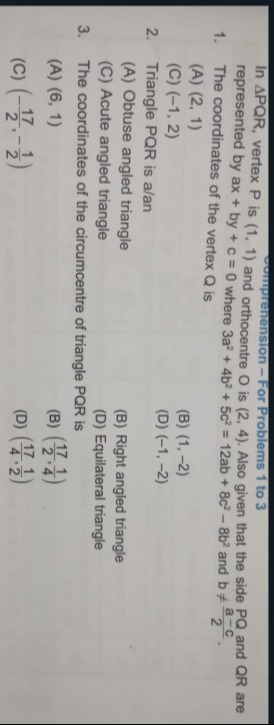Question
Question: In $\triangle PQR$, vertex P is (1, 1) and orthocentre O is (2, 4). Also given that the side PQ and ...
In △PQR, vertex P is (1, 1) and orthocentre O is (2, 4). Also given that the side PQ and QR are represented by ax + by + c = 0 where 3a2+4b2+5c2=12ab+8c2−8b2 and b=2a−c.
- The coordinates of the vertex Q is

A
(2, 1)
B
(1,-2)
C
(-1, 2)
D
(-1,-2)
Answer
(1, -2)
Explanation
Solution
The given condition 3a2+4b2+5c2=12ab+8c2−8b2 simplifies to (a−2b)2−c2=0, which yields (a−2b−c)(a−2b+c)=0. This means either a=2b+c or a=2b−c.
For the line ax+by+c=0:
If a=2b+c, the line passes through (−1,2).
If a=2b−c, the line passes through (1,−2).
The given constraint b=2a−c eliminates the case a=2b+c. Therefore, both lines PQ and QR must pass through (1,−2), which means Q = (1,−2).
